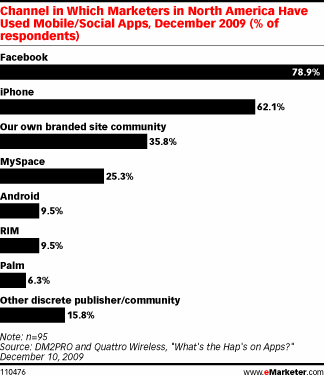![]() In mid-2009, U.S. advertisers came together in an attempt to ward off threats by the Federal Trade Commission and consumer advocacy groups against online behavioral advertising targeting claiming the process was a violation of individuals’ rights to privacy. A group of 12 companies that represent some of the biggest advertising spenders in the world, including Google, Microsoft, General Electric, and more, developed a document listing seven self-regulatory principles in an attempt to appease the opposition (you can view the 48-page PDF here).
In mid-2009, U.S. advertisers came together in an attempt to ward off threats by the Federal Trade Commission and consumer advocacy groups against online behavioral advertising targeting claiming the process was a violation of individuals’ rights to privacy. A group of 12 companies that represent some of the biggest advertising spenders in the world, including Google, Microsoft, General Electric, and more, developed a document listing seven self-regulatory principles in an attempt to appease the opposition (you can view the 48-page PDF here).
Part of the plan those companies came up with was to create an icon that would be used in online ads that are served based on behavioral data to fully disclose to consumers why they were seeing these ads. This month, the icon was unveiled and reported by The New York Times. You can see the privacy “i” icon pictured above.
Individuals who see this icon in an online ad can click on it to learn more about the process used to serve it to them, including the use of behavioral data.
There are two sides to this story. First, consumers have a right to dislike behavioral segmentation. As a consumer, I can see how it can be construed as an invasion of privacy. On the other hand, marketers and brand managers are likely to become more dependent on behavioral targeting once they see the boost in conversions it’s likely to deliver.
The simple truth is that demographic segmentation lost much of its allure years ago. In fact, I wrote an article about that exact topic in November 2007 for branding and marketing expert Drew McLellan’s popular blog, Drew’s Marketing Minute. The post was called “Is Demographic Segmentation Dead?” and discussed how demographic segmentation was already being usurped by behavioral segmentation.
In other words, the shift from demographic to behavioral targeting in online advertising is not new. It’s been coming for years, and the question now becomes — will advertisers find themselves faced with regulations preventing them from doing the behavioral targeting they so desperately want to use or will self-regulation allow them to continue without interference from government regulation? Only time will tell.
What do you think? Leave a comment and share your thoughts.

 Are all brands global? That’s a question we could have answered easily a decade or two ago, but today, it’s not as simple. With the growth of the social Web, tools like blogs, Twitter, Facebook, YouTube, and so on make the global conversation immediate. Could it be argued that because of the power of the social Web in terms of spreading information wider and faster than ever, all brands are global by default simply because they have the potential to get in front of a global audience?
Are all brands global? That’s a question we could have answered easily a decade or two ago, but today, it’s not as simple. With the growth of the social Web, tools like blogs, Twitter, Facebook, YouTube, and so on make the global conversation immediate. Could it be argued that because of the power of the social Web in terms of spreading information wider and faster than ever, all brands are global by default simply because they have the potential to get in front of a global audience?
 Building a successful brand takes time. There are no easy routes to success or shortcuts to save time. You might get lucky and garner widespread awareness and attention for your brand, but successful brands depend on customer loyalty. There are no shortcuts to developing relationships with consumers, creating expectations for your brand, and meeting those expectations through every customer touch point.
Building a successful brand takes time. There are no easy routes to success or shortcuts to save time. You might get lucky and garner widespread awareness and attention for your brand, but successful brands depend on customer loyalty. There are no shortcuts to developing relationships with consumers, creating expectations for your brand, and meeting those expectations through every customer touch point.